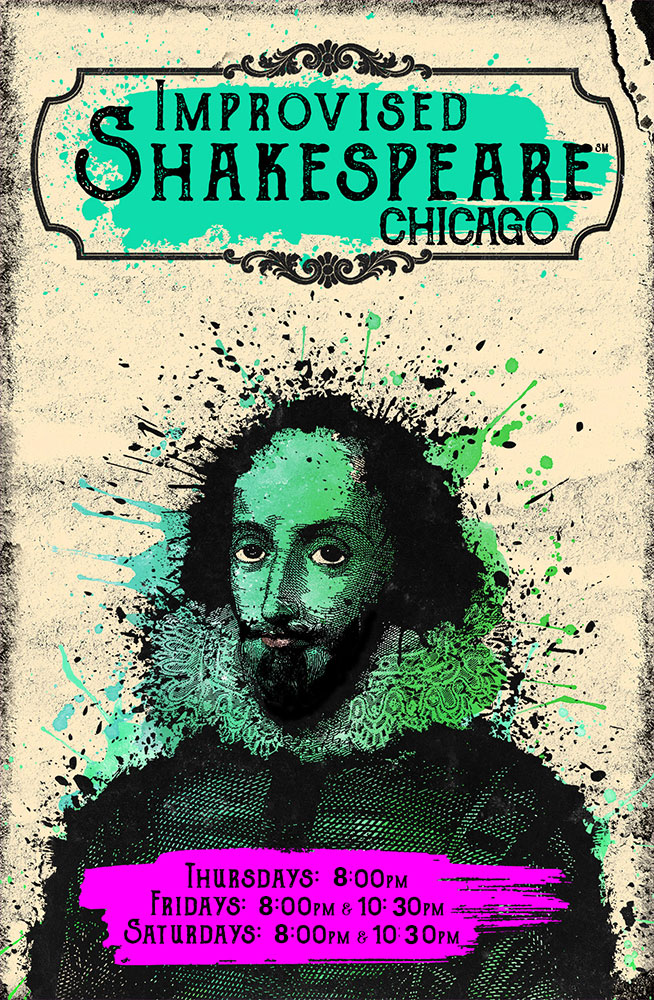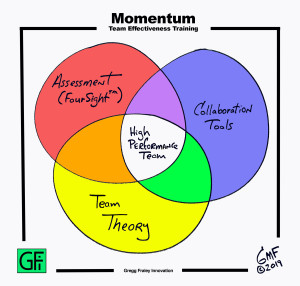Innovation Lessons from Improv Shakespeare
The Creative Power of High Function Teams is Astonishing, Rare, and, Possible
Getting Beyond “Group Think” Takes Training

A committee is where good ideas go to die.
This is not good news for innovation teams, because, innovation “teams” are often not teams at all. They are in fact, committees. A committee composed of people from different departments, with non-aligned goals, no team training or bonding, and built-in conflicts. They attempt to work together, but usually fail. It shouldn’t be a surprise, they were set up for failure.
It doesn’t have to be this way. Teams can create together and be uber effective. It takes training!
Proof: Can you imagine a group of eight people creating a Shakespeare play on the spot? It happens three nights a week in Chicago. Improv Shakespeare is not to be believed. They make up couplets on the spot, and the plays are imaginative stories and are insanely funny. If I hadn’t seen it myself (seven times now) I wouldn’t think it possible. It’s the best example of a highly effective team I’ve ever seen. They create what an individual could never do alone.
Innovation Team Failure is the Rule, Not the Exception
There is a prevailing set of assumptions going around the innovation world about group work. Here’s what I’ve heard:
- “Group brainstorming doesn’t work. It’s been tested and it’s not as effective as individuals working alone.”
- “Teams tend towards “group think” and have a harder time “getting out of the box.”
- “Individuals have agendas, and the conflict kills the team.”
- “Groups permit social loafing — some folks don’t engage”
- “Introverts don’t enjoy group work, especially if it involves fighting for attention or coping with dominating extroverted egos.”
On the surface, and for most teams, the above anti-group assumptions are absolutely true.
It’s also fair to say that the spark of an idea that starts-up an innovation project is probably coming from one brain. But…haven’t we all, even if it was just for a few minutes, experienced a team in creative flow? Where the teams talents multiply and are greater than the sum of its parts? It’s an elusive moment for most teams because they haven’t been trained in how to get into, and sustain, creative flow.
Group Creative Magic is Possible
If a team is high functioning, like the Improv Shakespeare folks, and knows how to build an idea together, innovation magic is possible. Art by Committee* is a competitive advantage. This kind of team is rare, and, they can be created.
High function teams are so notable they make Hollywood movies about them. Think Hoosiers, or Miracle on Ice. Neither of those teams should have achieved greatness, but they did.
How does the Improv Shakespeare team do it three times a week? Yes, they are talented, but please keep reading. Hint: it takes training.
Let’s acknowledge this fact: Even if a single individual comes up with a breakthrough idea, one person can’t do all the work of getting an idea “in-play” and to the market. That takes a team.
Idea development, that is, building, shaping and refining an idea into a real world solution that delivers value, is actually better suited to a team. That work actually requires creativity. Innovation requires not one idea, it requires a cluster of ideas all packaged around one core idea.
If a team is high function, they not only shape and refine, they invent, create, and do things no individual could hope to do. So can we please dispense with the outdated idea that it’s all about a single star?
It’s not individual work versus group work, it’s individual work AND group work.
Sadly, at best, only 10% of teams are truly high function. Most teams flail around avoiding conflict, or immersed in actual conflict, and never actually get to high function (see the Tuckman model, or read Patrick Lencioni’s “Five Dysfunctions of Team”) for why this is so.
I was re-reading Charna Halpern’s “Art by Committee, a Guide to Advanced Improvisation” last night (as inspiration for a session I’m leading soon) and ran across this quote:
“Art is possible by committee. Basically all you need is some structure, traffic patterns, game rules, and some kind of image of what it is you want to do… What the audience laughs at – and indeed will cheer at – are the moments of discovery — moments of connection – where the art by committee – where the group brain – really does start functioning. We see amazing kinds of communication going on between people. I’ve done this, of course, myself. Otherwise I wouldn’t have gotten hooked on it.”
Del Close, Inventor of long form Improv
Del Close spent his entire adult life figuring out how to make teams high function. He created the structures and games, etc. that made it possible.
A team in flow creates as a group, and it’s coherent, interesting, surprising, and useful. It’s work that couldn’t possibly be done by an individual sitting down and writing. It’s better. It’s inspirational — and you can do this.
For this magic to occur these teams work together for years, but at the root of it, in Improv, (business or entertainment) is simple; it’s about those structures and rules Del Close mentions, and, it’s about listening, trusting, and communicating to create.
What Improv teams like the Shakespeare troupe do is exactly what innovation teams need to do.
The lessons for innovators are straight forward:
- It’s not about individual versus group, it’s individual AND group.
- Groups that have the “structures and games” that enable group creativity can get to places an individual alone cannot.
- In innovation, the “games and structures” are assessments, problem solving processes and facilitation tools.
- Bottom line, it takes training to get to High Function Teams
Creating a High Function Team Takes Training & Work
It’s work and training most teams don’t do. Training is essential to get to high function (GFi offers Momentum Team Effectiveness Training). How else do teams have the awareness (through assessments) and the tools (to manage conflict, communicate, and problem solve) to get to High Function?
Good leadership makes a difference (including getting teams trained and prepared to be high function). At the end of the day inspired team thinking and work happens when there is trust, and when there is are those structures and games, and when the team is comfortable enough and confident enough to play with and build big picture concepts and ideas. It’s Business Improv.
Get the team training. Get to Team High Function. Get Breakthrough Innovation Results.
Get the Improv training. It’s another set of tools to augment High Function teams.
* “Art by Committee, a guide to advanced improvisation” is a book by Charna Halpern, founder of IO Theater.



